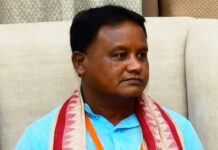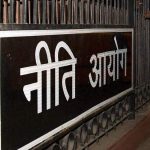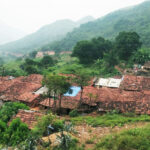Bhubaneswarpopularly known as the city of temples, literately meaning Lord of the Universe is hallowed as the Ekamra Kshetra, land of the single mango tree. It was famous as one of the great religious centres in Odisha since ancient times. An interesting colurfullegend is associated with the birth of the city. It was here that the goddess Parvati, celestial consort of Lord Shiva, pressed the demons, Kirti and Vasa deep into the bowels of the earth, punishing them for their evil sexual desire.
Bhubaneswar had a thousand temples at one time of which hundreds are still in tact and provide a living history of dynastic changes over two thousand years and a complete study of the “Kalinga Style’’ of architecture from its very inception to maturity. The earliest existing temples of Odisha. Judged from their developed from and the style of decoration are not earlier than the 6th century A.D. Thus it is difficult to determine the shape of the temples in their initial and formative stage.The early series of temples were probably erected during the period of Sailodbhavas and the Bhauma-karas. The Sailodbhava kings ruled from the middle of the sixth century till the first quarter of the eighth century. The temple building activities gained momentum under the Bhauma-karas and the Somavansis and reached the climax during the Ganga period. The activity continued even under the Suryavansi Gajapatis on a very small scale.
The Sailodbhava kings professed saivism and during their period some of the early temples like Satrughnesvara, Parasuramesvara and Svarnajalesvara were erected at Bhubaneswar. From amongst these early temples three ruined Shiva temples situated to the east of Rameswar temple and by the side of the road leading from the old station to Lingaraj Temple are locally known as Lakshsmanesvara, Bharatesvara and Satrughnesvara standing in a row from north to south constitute the earliest group among those extant in Bhubaneswar area. These temples were in a very dilapidated state and have been renovated and restored by the Department of Archaeology, Odisha. Of these the northern most temple of the row has been assigned to the latter half of the sixth century on the basis of paleography of the inscription engraved on the Nabagraha slab. The southern most temple, which has survived in a tolerably good condition, gives an ideas of the characteristics of the early types. The temple facing west is a simple structure, tri-ratha in plan, with a some what dwarfish type of sikhara. The front ratha of the temple is decorated with chaitya windows, of which the lower one encloses a panel showing Siva in his Ravananugraha murti. The upper niche contains a figure of Nataraj and is topped by a Kirttimukha above which there a representation of seated Lakulisa.
Generally the early temples have certain specific characteristics from the view point of architecture and sculptural design. The tri-ratha form, a cube of three divisions, a pabhuga of three mouldings, the baranda terminating in a recessed kanti, the gradual curvature and started form of sikhara unburdened by any anga-sekhara, and the absence of dopichha lions below amalaka sila etc. are some of the main features of the early temples. On the basis of style the early temples can be devided into two groups, those like Satrughnesvar, Bharatesvara and Lakshsmanesvara had only Vimana but had naporch or Jagamohan attached to the vimana. Addition of pillared porches or rectangular Jagamohan with terraced roof was a subsequent development with the parasuramesvara group of temples.
In the early temples, the sculptures appear in low relief and seem encrusted on the surface of the stone. The absence of Ketu among the grahas is another characteristic of the early group of temples.
The Parasuramesvara temple of Bhubaneswar assigned to seventh century A.D. is one of the most perfect of the early temples. The temple faces west, consisting of deul or vimana and J agamohan. The vimana or deul is tri-ratha in plan. It has an oblong Jagamohan with clearestory skylights between two slapping tires of terraced roof. The exterior of the temple is profusely ornamented. The viman or deul is embellished with two chaitya windows. The bada of the Jagamohan is also equally decorated. Particularly depiction of Ravana shaking mountain Kailash, a fme eight-armed Nataraj with other cult images such as Surya, Lakulisa, Ganesa, a group of Saptamatruka etc. are worthy of attention. Every piece of stone has its antic values for which Parasuramesvara is famous as a lavishly decorated temple of earlier temples is the best preserved specimen Oris san temples.
The Svarnajalesvara temple assigned to seventh century at Bhubaneswara is another specimen of the early type. This ruined temple is situated at a few distance to the south of Parasuramesvara. The temple consisting of vim ana only, faces west in dilapidated condition. Its shape, elevation and decorative designs shows clear affmities with the temple of parasuramesvara. It has some interesting and highly aesthetic depictions from the epic Ramayana and pictures of Siva Parvati. The figure of Gaja-Laxmi, marriage of Siva-Parvati, meeting of Rama and Sugriva, Rama killing of Golden deer, fight between Kirat and Arjun are most interesting to see.
The early series of temples were not confined to Bhubaneswar alone, the other places of Odisha have also been studded with a lot of early temples assigned to Sailodbhava and Bhauma-Kara period.








































